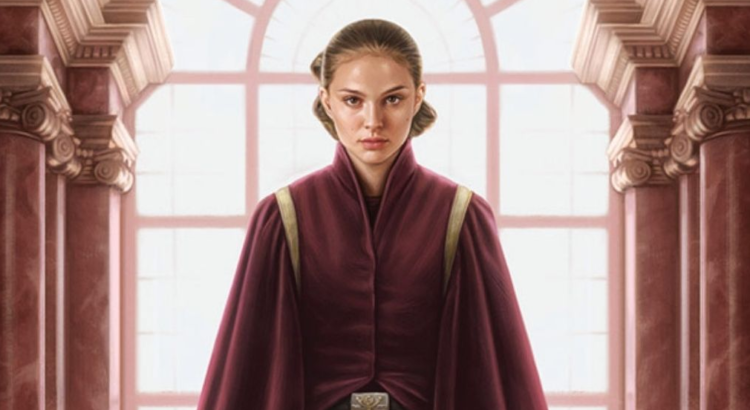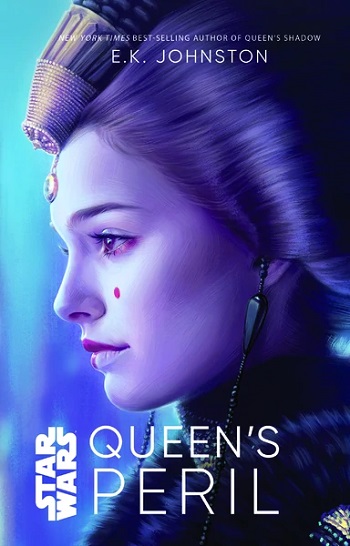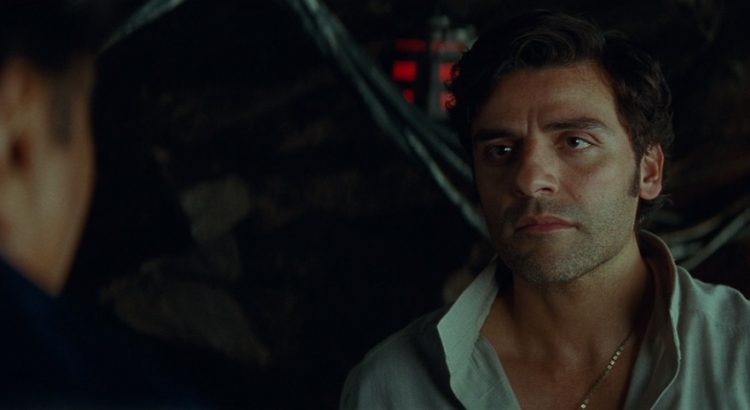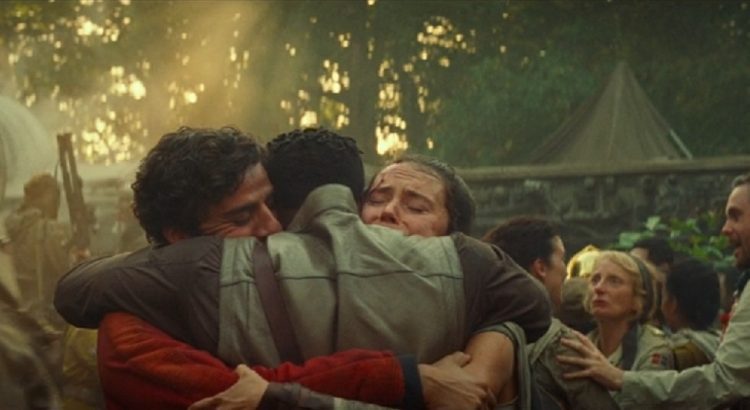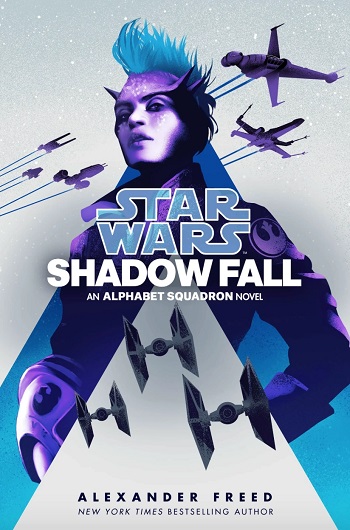How does a fourteen-year-old girl become queen of an entire planet?
This is a question many of us have had since being introduced to Queen Padmé Amidala in The Phantom Menace. For years, Padmé has enjoyed a celebrated position among fans, especially women who grew up with the prequel trilogy. She was a fiery character, equally at home making passionate arguments in the Senate as she was shooting a blaster at bad guys, she wasn’t afraid to stand up for what was right, and she had an absolutely killer wardrobe. But despite her dedicated fanbase, it took twenty years for Padmé to star in her own novel.
Last year, I talked about how much of a revelation Queen’s Shadow was, and how incredible it was to finally get to read a story that not only gives one of my favorite characters her long-overdue chance in the spotlight, but was the rare story that focused entirely on women and their relationships with one another. It’s not a surprise to learn that author E.K. Johnston has been a fan of Padmé since the character’s debut, because her love for Padmé and the handmaidens came through in every word and detail.
While Queen’s Shadow focused on Padmé transitioning from Queen of Naboo to galactic senator and dealing with the fallout of her actions in TPM, Queen’s Peril goes back farther to focus on her coming of age on the political stage as she becomes queen, builds her inner circle of handmaidens and learns to navigate her personal life amidst the major galactic events beginning to take shape around her. E.K. Johnston was kind enough to sit down with us via email to discuss Queen’s Peril, writing prequels, how her fanfiction background aids her as a writer, and the importance of the teenage-girl experience.
Read More